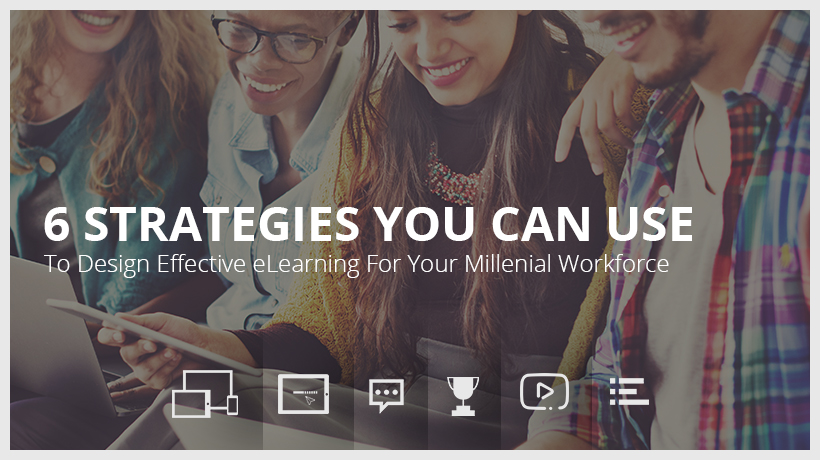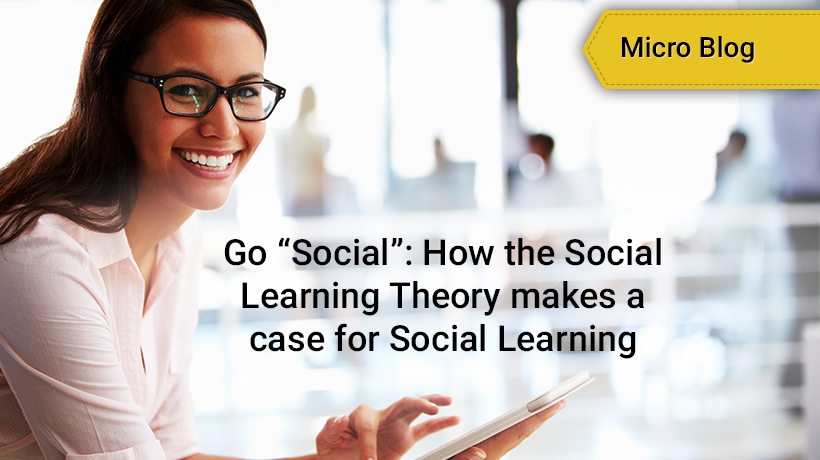
Introduction
Leveraging mLearning goes beyond providing mobile-enabled learning content. When done right, it can yield significant benefits for your blended learning strategy. Read on as I outline how you can leverage mobile learning in blended training.
Background
Over the past decade or so, corporate training has gone through several iterations, moving from in-class, Instructor-Led Training (ILT) to Virtual-ILT and ultimately to 100% Self-Directed Learning with little or no instructor-led components.
Each mode offers unique value to the learners. However, Blended Training is being acknowledged as an optimal approach for online training – delivering benefits from both ILT and 100% self-directed training models.
What Is Blended Learning?
Blended Learning is a training approach that fuses a blend of two different learning approaches, that is, classroom training and online learning.
- This hybrid approach to training brings facilitated Instructor-Led Training (ILT) and self-paced learning together, to deliver an optimally Blended Learning experience.
- Blended Training also produces a best-of-breeds training program that leverages best practices from across a spectrum of training approaches.
How Is Blended Learning Relevant in the Current Context (COVID-19 Pandemic) as Well as in Meeting the Needs of the Learners and Organizations?
Relevance of Blended Learning in the context of the current pandemic
The COVID-19 pandemic has triggered the need for organizations to opt for a work-from-home mode. The changed workplace and the ongoing need for social distancing are clearly accelerating the need for organizations to re-evaluate the classroom or ILT training to a virtual or online mode.
Other triggers for acceleration in the adoption of Blended Learning
The need to re-evaluate the predominant ILT mode to a Fully Online or a Blended mode is not on account of the COVID-19 pandemic alone.
- Today’s workforce is multi-generational, with each generation having specific training preferences. Therefore, it is important to train them using cross-generational training approaches. While Boomers and Gen X’ers gravitate toward facilitated desktop-driven training, Millennials and Gen Z’ers prefer more autonomous, self-paced learning on mobile devices.
- There is a strong push from learners who want the flexibility to take the training at their own pace, remotely.
- It is also due to budget cuts and the need to maximize the available budget to meet the program objectives.
Blended Training strikes a balance between training approaches to deliver the right mix of learning opportunities for every segment of the multi-generational workforce. It also enables you to maximize your dollar spend for the program.
NOTE: The remote operations, with majority of employees working from home, marks further changes to the way we will see the delivery of Blended training.
- The ILT mode will move to VILT (synchronous or live sessions with the facilitator/trainer). This mode will work when the session duration is short (not exceeding 60 mins to 75 mins). Or, the session can be mapped to multiple synchronous connect over a period of time – thereby ensuring that each session is around 60 mins or so.
- In the asynchronous mode, the learners are provided access to online recordings of the VILT session. Additionally, its online supporting collaterals (pre-session prep material and post-session hand-outs) are shared with learners. Furthermore, the nuggets for self-paced, online learning are provided.
What Role Does mLearning Play in Blended Learning?
Because of the proliferation of mobile devices, mLearning is ubiquitous. And there are several reasons why this training approach is favored, by both corporate learners and training professionals alike, as part of a comprehensive Blended Learning strategy.
Here is a list of the top 7 benefits you accrue when you leverage mLearning for Blended Learning:
- mLearning facilitates the ability to learn anytime, anywhere. This is particularly relevant in today’s context where the room for remote learning is critical.
- It makes use of learning on-the-go, which shortens the learning curve.
- mLearning fosters Personalized Learning.
- Responsive mLearning technologies make content available across devices. As a result, the learners can seamlessly move across laptops/desktops to smartphones/tablets in the day.
- It can be quickly scaled and deployed to a geographically disbursed audience.
- mLearning requires less expensive tools, technologies, and infrastructure (compared to the traditional classroom solution), which makes training more cost-effective. Once you invest in this, it can be used across the organization without any additional costs. This scalability improves the ROI on this training spend.
- It brings flexibility to Blended Learning strategies – you can plan for more frequent updates, broader variety of courses, and keep your trainings current and relevant.
How to Leverage mLearning to Maximize Blended Learning Benefits?
Corporate training budgetary pressures and a quest for more enriched learning experiences are significant driving factors in the popularity of mLearning.
However, mLearning is more involved than just taking existing learning content and transforming it for small-footprint devices.
Making the best of mLearning, as part of a Blended Training approach, requires a graduated strategy of “blending” classroom and mLearning/Online training. This transition can take the form of:
- Significant initial ILT component, with lesser Online training.
- Balancing ILT and Online training.
- More Online training with supporting ILT.
At a more micro level, the following 5 tips are helpful in successfully leveraging mLearning to maximize the Blended Learning:
- Push notifications: Send out notifications and reminders to mobile learners on upcoming deadlines and milestones (tests, assignments, etc.).
- Timely assessment feedback: Deliver assessment feedback or request clarifications (on assignments and submissions) via text messaging and instant messages.
- In-person contact: Use videoconferencing and live chat features to personalize learner-trainer interactions.
- Social Learning: Encourage learning through social media platforms, chat groups, and discussion channels.
- Post-training surveys: Mobile devices are great at requesting and eliciting post training learner feedback. Use such comments to enhance the next training iteration.
Because Blended Learning aims to train multi-generational workforces, all of the tactics (for mLearning) may be also modified to support non-mobile platforms – for instance, email instead of text messaging and desk cams instead of smartphone cams.
What Types of Trainings Would Benefit from mLearning and Blended Training Delivery?
Actually, any corporate training initiative, that’s traditionally delivered in the ILT form, could benefit from a Blended Training approach. This includes:
- Employee Induction and Onboarding.
- Sales training.
- Developing soft skills.
- Leadership training, including motivational and influencing skills.
- Professional skills enhancement.
- Certification and Compliance training.
- Application Software training.
NOTE: In transitioning such training, from primarily in-class sessions to Blended Learning modules, corporate trainers now have the flexibility to balance the amount of ILT content with Virtual ILT and self-directed content, depending on individual learner profiles.
By introducing a significant mLearning component, trainers can add greater flexibility to training schedules and give learners more control on where and how they choose to learn.
I hope my article gives you the required insights on how you can leverage mLearning to increase the impact of your Blended Training delivery. Given the COVID-19 triggered need to look at the migration of ILT/classroom training to Blended or a Fully Online mode, I am sure you will find the insights relevant and useful.
Meanwhile, if you have any specific queries, do contact me or leave a comment below.
Read More
- Free eBook: COVID-19 Survival Guide For L&D Teams – Featuring Tips, Strategies, and an Action Plan to Handle the Challenge
- 5 Amazingly Effective Strategies To Convert Your ILT Program To High-Impact Virtual Training
- Using Blended Training in Your Employee Onboarding Program to Promote Organizational Culture
- Why Should You Adopt Blended Learning, and How Can You Design It to Ensure Success?
- 10 Mobile Learning Trends to Adopt in 2020 – To Drive Employee Performance and Behavioral Change



